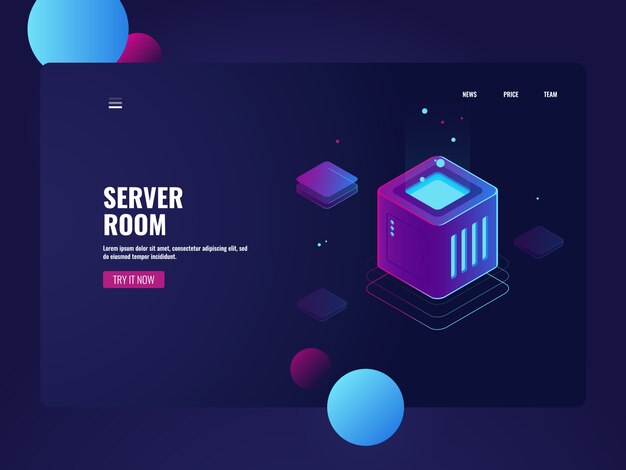Comparing Serverless and Microservices Architecture to Choose
In today’s rapidly evolving technological landscape, developers face a crucial decision when it comes to structuring their applications. The options available are diverse, each presenting unique benefits and challenges that can significantly impact the scalability, maintainability, and overall performance of the solution. Understanding these paradigms is essential for making an informed choice that aligns with the specific requirements of the undertaking.
The decision-making process involves assessing various factors, including resource allocation, flexibility, and deployment strategies. By examining two prominent methodologies, teams can better identify the road that suits their needs, ensuring that the final choice not only meets immediate demands but also provides a solid foundation for future growth. Each alternative embodies distinct principles that cater to different scenarios, making a careful examination imperative.
Ultimately, selecting an appropriate framework requires a strategic evaluation of the project’s long-term goals. As applications become increasingly complex, recognizing how different systems can complement each other or stand alone will guide teams toward achieving optimal results. Engaging with these innovative models allows developers to tailor their work effectively, paving the way for enhanced productivity and an elevated user experience.
Understanding Serverless Architecture Concepts
In recent years, a novel approach to build and deploy applications has emerged, significantly altering the landscape of software development. This paradigm shifts the focus from traditional server management to enabling developers to prioritize writing code and delivering value quickly. It eliminates the burdens associated with infrastructure management, allowing teams to scale seamlessly in response to demand.
Key Principles of the Approach
One of the core tenets of this method is the event-driven model. Functions are triggered by specific events, processing workloads in a highly efficient manner. This not only improves responsiveness but also optimizes resources, as users pay only for the compute time consumed during execution. Additionally, the decoupled nature of components means that each function can be developed, tested, and deployed independently, fostering agility and enhancing collaboration among development teams.
Benefits and Use Cases
The advantages of adopting this method include cost efficiency, simplified scalability, and rapid deployment cycles. Businesses can respond to changing demands without the need for extensive provisioning and management of servers. Common use cases range from real-time data processing, web applications to chatbots and APIs, making it a versatile choice for various scenarios. Understanding these essential concepts helps organizations determine the best strategies to leverage this innovative approach in their software development processes.
Exploring Microservices Fundamentals
In the realm of software development, the shift towards a more flexible and scalable approach has gained significant traction. This method emphasizes the breakdown of applications into smaller, manageable components, each responsible for a specific function. By adopting this strategy, teams can enhance collaboration, streamline deployment, and improve overall system resilience.
Key principles underlie this development methodology, including decentralization, autonomy, and lightweight communication. Each component operates independently, allowing for frequent updates without impacting the entire system. This autonomy not only accelerates development cycles but also empowers teams to utilize diverse technologies and programming languages best suited for their specific tasks.
Moreover, effective communication between these components is crucial. Using APIs or messaging systems, components can interact seamlessly, ensuring smooth operation within the broader system. This interconnectedness is vital for maintaining coherence while also allowing each element to evolve independently over time.
Overall, embracing this contemporary approach can lead to increased agility, better resource utilization, and improved responsiveness to changing user needs, positioning organizations to thrive in an ever-evolving digital landscape.
Benefits of Serverless Solutions
Adopting a model that abstracts server management can significantly enhance the development process and operational efficiency. By minimizing the overhead associated with physical server maintenance, organizations can focus more on delivering value and innovation.
Cost Efficiency
One of the primary advantages of this model is cost savings. Businesses pay only for the resources they consume, eliminating unnecessary expenditure. Key points include:
- Pay-per-use pricing models that adjust to actual usage.
- No need for provisioning and managing servers, leading to reduced operational costs.
- Decreased need for upfront investment in infrastructure.
Scalability and Flexibility
This approach allows applications to scale automatically in response to demand. This feature enhances the user experience and system performance. Consider the following benefits:
- Automatic scaling based on traffic and load without manual intervention.
- Rapid deployment of updates, ensuring continuous improvement and agility.
- Seamless integration with various services and APIs, promoting extensibility.
Overall, this model empowers teams to streamline workflows, reduce costs, and enhance their capacity to innovate rapidly.
Advantages of Microservices Approach
The adoption of a modular and decentralized methodology in software development brings numerous benefits that can significantly enhance the performance and scalability of applications. By breaking down complex systems into smaller, manageable components, teams can improve collaboration, accelerate delivery, and optimize resource utilization.
Enhanced Scalability
One of the primary benefits of this approach is its ability to scale individual components independently. Organizations can allocate resources strategically, allowing them to respond swiftly to changing demands without the need to scale the entire system. This leads to improved efficiency and cost-effectiveness, ensuring that only the necessary resources are utilized.
Improved Fault Isolation
Another important advantage is the enhancement of fault tolerance. By compartmentalizing functionalities, a failure in one component does not lead to a complete system breakdown. This isolation allows developers to address issues more rapidly while maintaining overall system stability, resulting in a better user experience and minimized downtime.
Use Cases for Serverless Architecture
This section explores various scenarios where utilizing a function-based approach to computing shines. By leveraging managed infrastructure, teams can build and deploy applications with minimal overhead while concentrating on core business logic. Ideal for specific tasks, this model enhances scalability and efficiency, enabling developers to respond quickly to changing demands.
Event-Driven Applications
One of the most significant advantages of a function-based model is its aptitude for handling event-driven systems. These applications respond to external triggers, such as user actions or data changes. For instance, processing incoming webhooks or handling user uploads can occur seamlessly without the need to manage servers actively. This capability allows developers to focus on creating responsive experiences without worrying about infrastructure management.
Data Processing Tasks
Another compelling application involves executing batch processing or real-time analytics. Automated data transformation tasks, such as parsing logs or performing ETL (extract, transform, load) operations, can benefit from this adaptable model. With built-in scalability, any spikes in data loads are managed effortlessly, ensuring that processing remains efficient and cost-effective.
In summary, the flexibility and efficiency inherent in this service-oriented approach make it a great fit for tasks characterized by unpredictable workloads and event-driven functionalities.
When to Choose Microservices Over Serverless
Opting for a specific approach in application development often hinges on the unique requirements of the system in question. Certain scenarios demand a method that emphasizes modularity, allowing for greater control over individual components and their interactions. This perspective is essential when evaluating the best fit for complex, large-scale environments where customization and scalability are paramount.
First and foremost, consider the complexity of the application. If the solution comprises numerous features, each with distinct functionalities, a modular design could enhance maintainability and facilitate independent development cycles. This separation enables teams to innovate rapidly without compromising the overall system.
Another critical factor is the necessity for robust data management. When applications require intricate database interactions or high-demand processing, a finely-tuned structure can provide better control over data flow and storage. This is particularly beneficial in scenarios where performance optimization is essential due to significant traffic fluctuations.
Additionally, in environments where long-term operational stability is vital, adopting a dispersed approach allows for tailored deployment strategies. By ensuring that each component can be individually orchestrated, organizations can enhance resilience and reduce the likelihood of entire system failures.
Lastly, if your team is proficient in managing distributed systems and seeks to leverage advanced deployment practices, embracing a decentralized model can unlock greater flexibility. This aligns well with continuous integration and continuous delivery (CI/CD) practices, enabling teams to iterate quickly and respond to user needs efficiently.
Q&A: Serverless vs microservices
What is a serverless function and how does it work in the cloud?
A serverless function is a single-purpose, stateless code block that is executed in response to events, managed by a cloud provider, eliminating the need for server management.
How do microservices differ from traditional monolithic architecture?
Microservices break down an application into smaller, independent services that communicate with each other, whereas monolithic architecture integrates all components into a single, tightly-coupled system.
What are the benefits of using serverless for deploying microservices?
Using serverless for microservices allows automatic scaling, reduced operational overhead, and cost efficiency since you only pay for the actual execution time, not for idle server resources.
How does AWS Lambda facilitate serverless computing?
AWS Lambda allows developers to run serverless functions in response to events, providing automatic scaling, built-in fault tolerance, and eliminating the need to manage the underlying infrastructure.
What are the key differences between microservices vs serverless architectures?
Microservices focus on breaking down applications into smaller services, while serverless emphasizes event-driven, stateless functions that are managed by a cloud provider without worrying about server management.
When should a business consider using a serverless platform over a traditional server-based approach?
A business should consider using a serverless platform when it needs to reduce infrastructure management, scale automatically based on demand, and optimize costs by paying only for the actual compute time.
How does a serverless environment simplify the deployment of a complex application?
A serverless environment simplifies the deployment of a complex application by handling the infrastructure, scaling, and provisioning automatically, allowing developers to focus on code and business logic.
What is the advantage of using serverless microservices in cloud-based applications?
The advantage of using serverless microservices is the ability to scale individual services independently, reduce operational complexity, and optimize costs by paying only for the resources used by each service.
How does a cloud provider support serverless computing for developers?
A cloud provider supports serverless computing by offering platforms like AWS Lambda, Azure Functions, and Google Cloud Functions, which manage the infrastructure, scalability, and availability of serverless functions.
Why might developers choose microservices and serverless architecture for an entire application?
Developers might choose microservices and serverless architecture for an entire application to achieve greater scalability, flexibility, and faster development cycles while minimizing operational overhead.
How does serverless architecture compare to traditional software architecture?
Serverless architecture eliminates the need for managing servers by allowing cloud providers to handle infrastructure, while traditional software architecture requires manual server management and maintenance.
When should you use serverless architecture over microservices architecture?
You should use serverless architecture when you need to handle event-driven workloads with unpredictable traffic, and microservices architecture when you need fine-grained control over services and interdependencies.
How do you choose the right architecture for your application?
To choose the right architecture, consider factors like scalability, cost, complexity, and specific application requirements, balancing between serverless for simplicity and microservices for flexibility.
What are the key advantages of the serverless model for modern applications?
The serverless model offers automatic scaling, reduced operational overhead, and a pay-per-use billing structure, making it ideal for dynamic workloads and rapid deployment.
How does a microservices application differ from a monolithic application?
A microservices application is composed of independent services that can be developed, deployed, and scaled separately, while a monolithic application is a single, unified codebase where all components are tightly integrated.
How do microservices enable better scalability and flexibility in software development?
Microservices enable better scalability by allowing individual services to be scaled independently based on demand, and they provide flexibility by enabling different teams to work on separate services concurrently.
What are the benefits of combining serverless and microservices in a single application?
Combining serverless and microservices allows you to leverage the scalability and flexibility of microservices with the cost efficiency and simplicity of serverless, optimizing your application for both performance and cost.
What factors should you consider to choose between serverless and microservices architectures?
When deciding to choose between serverless and microservices architectures, consider factors like development speed, cost management, the complexity of deployment, and the need for fine-tuned control over individual services.
How do serverless functions differ from microservices in application deployment?
Serverless functions are stateless, event-driven pieces of code managed by a cloud provider, while microservices are stateful, self-contained services that communicate with each other, often requiring more complex infrastructure management.
What are the main differences between serverless and microservices architectures in terms of scalability?
The main differences between serverless and microservices architectures lie in how they scale: serverless scales automatically based on events, whereas microservices require manual scaling for each independent service, offering more control but requiring more effort.



